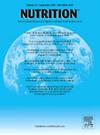Effectiveness of tableware to improve eating behavior and cardiometabolic health: A systematic review and meta-analysis
IF 3.2
3区 医学
Q2 NUTRITION & DIETETICS
引用次数: 0
Abstract
Introduction
This study determined whether tableware-based intervention promotes healthy eating behavior and address cardiometabolic risk factors.
Methods
PubMed, Web of Science, Scopus, Embase, ClinicalTrials.gov, and ICTRP were searched from the earliest date available to July 2024. Data were pooled to calculate mean differences and 95% confidence intervals using a random or fixed effect model. This study was registered with PROSPERO (CRD42024573343).
Results
Twenty-seven publications with 5319 participants were included in this review. The effectiveness of tableware was mostly evaluated through plate models, followed by lunchboxes, forks, spoons, placemats, and take-out containers. Tableware significantly reduced bite rate (d = –1.04 bites per minute), protein intake (d = –14.13 g), and starch intake (d = –26.27 g), body weight (d = –1.24 kg), body mass index (d = –0.41 kg/m2), waist circumference (d = –1.24 cm), HbA1c (d = –0.41%), 2-hour postprandial glucose (d = –2.47 mmol/L), and high-density lipoprotein cholesterol (d = –1.61 mg/dL). Tableware significantly increased the proportion of vegetables taken (d = 5%), with a positive trend for increasing meal duration and fruit intakes. Tableware had no significant effect on blood pressure, total cholesterol, triglycerides, low-density lipoprotein, and fasting blood glucose (unless 12 months duration).
Conclusions
Tableware might be a practical tool to promote healthy food choices and weight loss, address fast eating, and improve cardiometabolic health across populations of various age groups.
餐具改善饮食行为和心脏代谢健康的有效性:一项系统综述和荟萃分析
本研究确定以餐具为基础的干预是否能促进健康饮食行为和解决心脏代谢危险因素。方法检索spubmed、Web of Science、Scopus、Embase、ClinicalTrials.gov和ICTRP,检索时间为最早可查日期至2024年7月。采用随机或固定效应模型对数据进行汇总,计算平均差异和95%置信区间。本研究已在PROSPERO注册(CRD42024573343)。结果共纳入27篇文献,5319名受试者。餐具的有效性主要通过盘子模型来评估,其次是午餐盒、叉子、勺子、餐垫和外卖容器。餐具显著降低了咬伤率(d = -1.04咬/分钟)、蛋白质摄入量(d = -14.13 g)和淀粉摄入量(d = -26.27 g)、体重(d = -1.24 kg)、体重指数(d = -0.41 kg/m2)、腰围(d = -1.24 cm)、糖化血红蛋白(d = -0.41%)、餐后2小时血糖(d = -2.47 mmol/L)和高密度脂蛋白胆固醇(d = -1.61 mg/dL)。餐具显著增加了蔬菜摄入的比例(d = 5%),并有增加用餐时间和水果摄入量的积极趋势。餐具对血压、总胆固醇、甘油三酯、低密度脂蛋白和空腹血糖没有显著影响(除非持续12个月)。结论stableware可能是一种实用的工具,可以促进不同年龄段人群的健康饮食选择和减肥,解决快餐问题,改善心脏代谢健康。
本文章由计算机程序翻译,如有差异,请以英文原文为准。
求助全文
约1分钟内获得全文
求助全文
来源期刊

Nutrition
医学-营养学
CiteScore
7.80
自引率
2.30%
发文量
300
审稿时长
60 days
期刊介绍:
Nutrition has an open access mirror journal Nutrition: X, sharing the same aims and scope, editorial team, submission system and rigorous peer review.
Founded by Michael M. Meguid in the early 1980''s, Nutrition presents advances in nutrition research and science, informs its readers on new and advancing technologies and data in clinical nutrition practice, encourages the application of outcomes research and meta-analyses to problems in patient-related nutrition; and seeks to help clarify and set the research, policy and practice agenda for nutrition science to enhance human well-being in the years ahead.
 求助内容:
求助内容: 应助结果提醒方式:
应助结果提醒方式:


